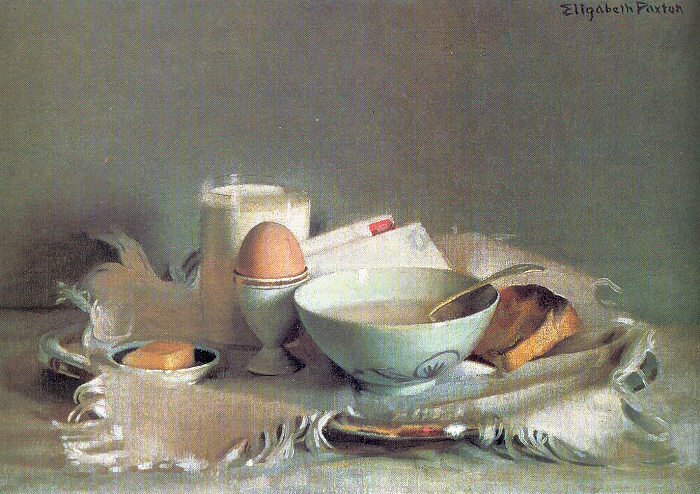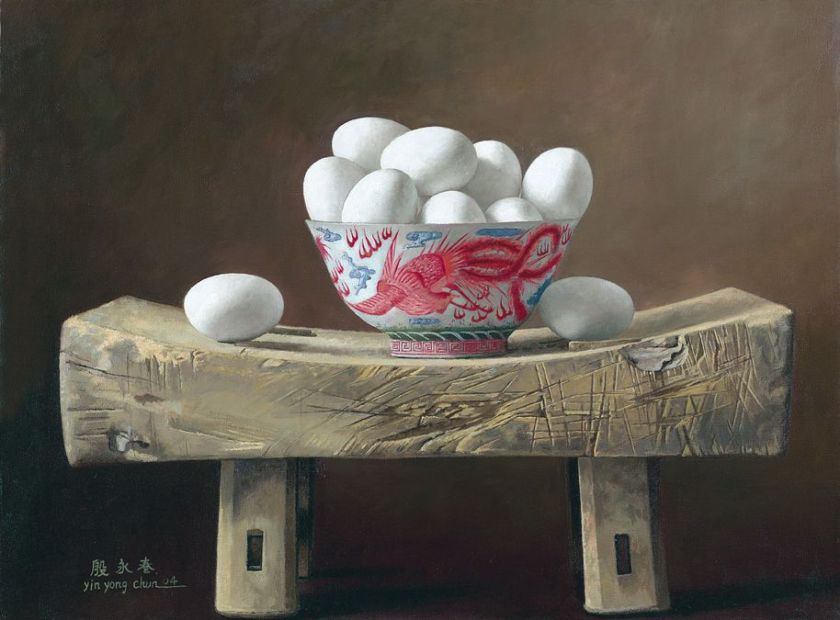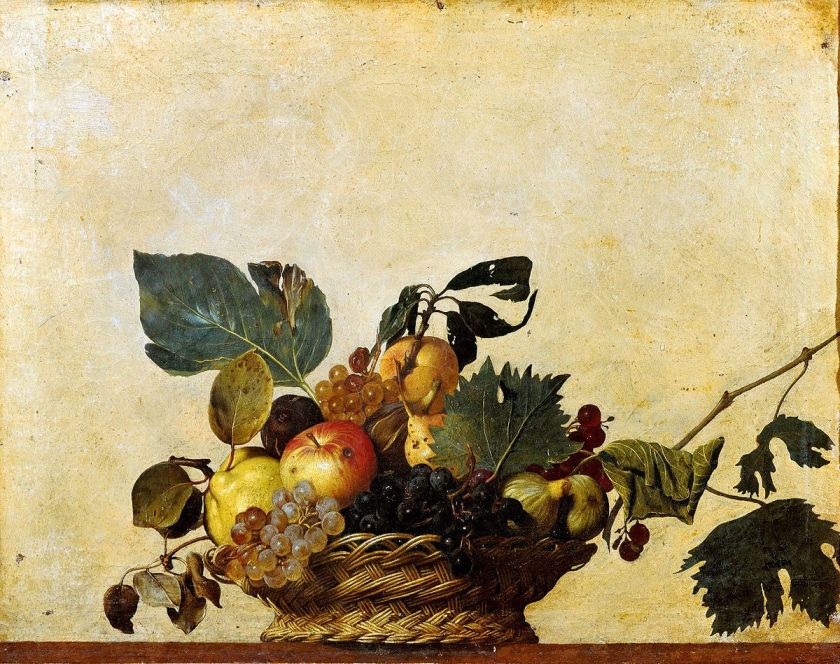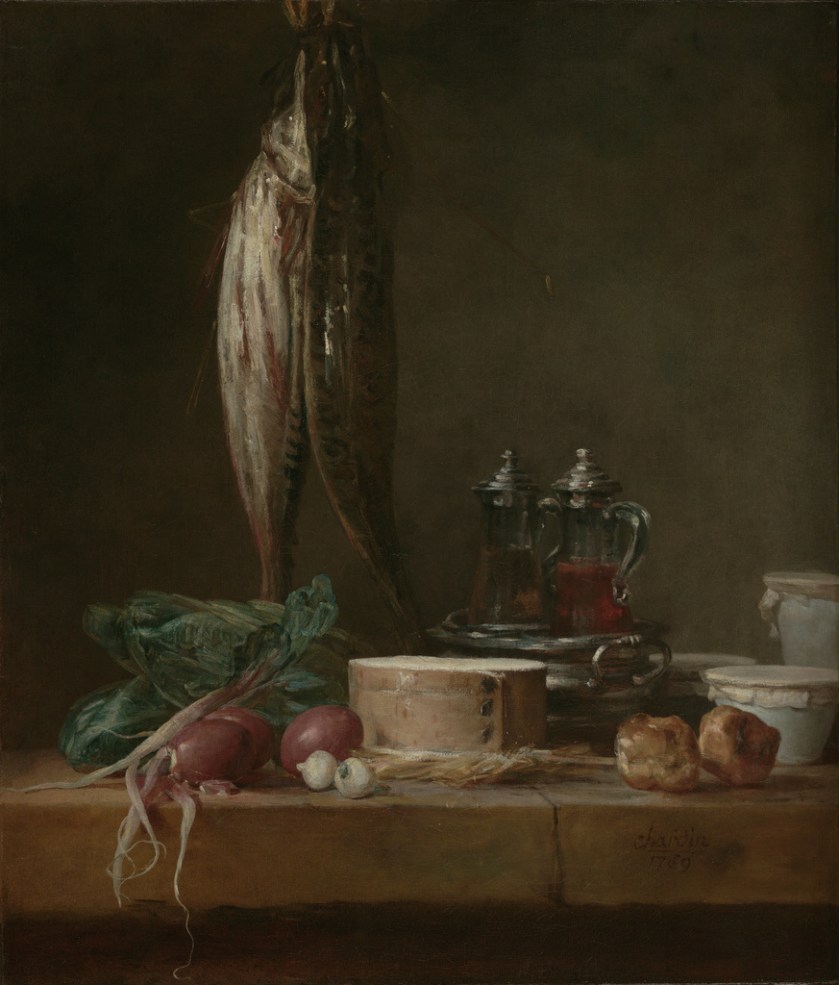My mother is the first work I observed: on weekends she could remain still, ideal subject, embodiment of inertia, until two o’clock in the afternoon. In her hazy bedroom, the light diffused through the window blinds like watercolors, blurring edges and corners. Peaking through the doorway, past the latch painted over so many times that it refused to close, I watched the down comforter rise and fall with her breath. At the head of the bed, beyond a tuft of blond hair nestled into goose feather pillows, a tableau upon black wood: aged paper lamp, stack of magazines, alarm clock.

An early bird, I found her stillness foreign, perplexing, impenetrable. To shut out the world as she did during those morning hours, to seal oneself from visceral stimuli, seemed an impossible feat. Everything–everything!–spoke to me: the sun, the wind rushing against the windows, the neighbor’s lawn mower, ravens on the roof, the ripeness of the next moment, and each one after. Unable to rouse my mother from slumber, I became a virtuoso of the breakfast vignette: aged kitchen table awash in rosy morning light, blackened toast atop white plate, dabs of melting butter, knife glistening with jam. Pile of pithy clementine rinds. Milk glass, butter dish.

Mine has always been a restless energy and, with the occasional stroke of luck, a creative one. In hapless periods I tend towards mental and physical exhaustion, auctioning off my sanity to high-bidding inner demons. For years, I accosted my own canvas in aggravated strokes, chasing abstract figures, obsessed with negative space, all of it laboriously baroque. I was loyal to the shadows, striking light in short bursts; the days comprised a jarring chiaroscuro. My brushes disintegrated, overworked.

The second still life I studied at close quarters: a shelter dog come to make a home out of mine. From the first day, she painted herself the focal point of every scene, and I grew to admire her steadfastness, her trusting nature, and her affinity for predictable rhythms. I relished watching her sleep in the evenings, tired and well-fed, curled into a tight black ball on her knotted woolen bed atop a crimson rug, cast in the glow of a table lamp with clock perched beside, entirely untroubled, entirely at ease. For me, that satisfaction was a secondary stillness, vicarious relaxation, like watching autumn leaves fall, tumbling memento mori, from treetops.

Slowly, over time and broken hearts, I learned to engage stillness purposefully, finally grasping its value in a harried world. For too long I had clung to my own fretful flaws, muddled and spent by repetitious self-defeat. A still life remains an aspiration, even today; I’m more drawn to the itinerant moon, always heavy, if not always full, distracted by the night’s brightest company. But I identify less readily with restlessness, I recognize it as a passing mood instead of a way of being.

These days I rest beside my newest acquisition, well-framed and prominently displayed. Handsomely balanced in composition, he embodies the still life with deft expertise, tranquil in slumber, owning his center of gravity, never rushed, imperfect and complete. As muses go, he inspires faith: in the pace of the unfolding universe and in the palette of a new day, the stuff of which great works are made.

Still lifes are considered, by the French Academy, the lowest rung in the hierarchy of painting, a most basic achievement. Yet over the centuries they’ve proved fertile ground for experimentation that has pushed the boundaries of art beyond fathomable limits, from Cezanne to Caulfield. How apt the Dutch stilleven, which upholds the vitality of stillness, in contrast to the darker terminology of the Romance languages: nature morte. The energy required for transformative thinking, for evolution, necessitates turns of stillness. Quiet is essential, a canvas for engaging the world. Though mastery eludes me, I practice with devotion, and with gratitude for lessons learned.
.
.
The remarkable works included here, in order of appearance:
(Header image, a personal favorite) Jean-Baptiste-Simeon Chardin: Still Life with Fish, Vegetables, Gougères, Pots, and Cruets on a Table
Marc Whitney: Morning Light Unmade Bed
Elizabeth Paxton: Breakfast Still Life
Juan Sanchez Cotan: Still Life with Quince, Cabbage, Melon, and Cucumber
Bartolomeo Guidobono: Still life with kitchen utensils, poultry, sleeping dog and lemons
Yin Yong Chun: Red Lucky
The inimitable Michelangelo Merisi da Caravaggio: Basket of Fruit


Such a delightful writing style; it soothes me, thank you
LikeLiked by 1 person
Thanks a lot, that’s a great thing to hear (er… read). Thanks to you for taking the time to read!
LikeLiked by 1 person
Beautiful, Erin. A poem in prose. Thank you. Un abrazo, Wendy
LikeLiked by 1 person
Thank you, Wendy! Means a lot! Now if only I could do the same in Spanish… 🙂
LikeLike
Ah, the curse of the early risers. Don’t lie-ins know what they miss? Thanks for the Caravaggio at the end.
LikeLiked by 1 person
I’m not sure who carries the curse, but personally I’m glad early risers get to enjoy breakfast, hehe!
Anything about still lifes would be incomplete without Caravaggio!
LikeLiked by 1 person
Looking at the overlooked. Perfectly expressed.
LikeLike